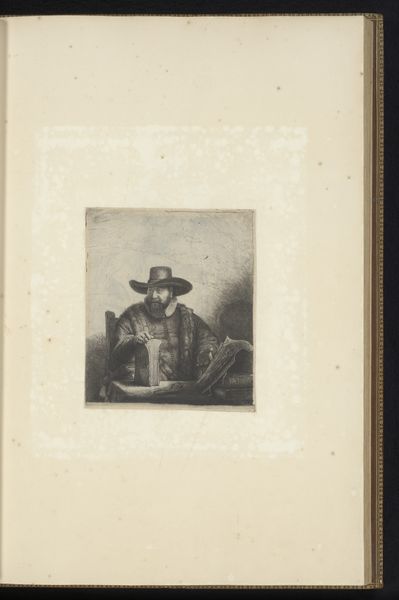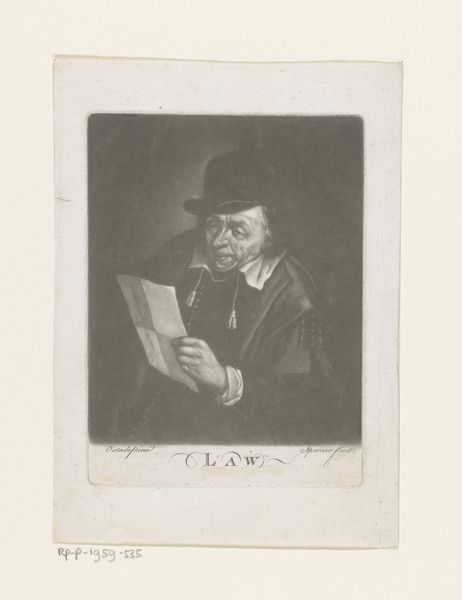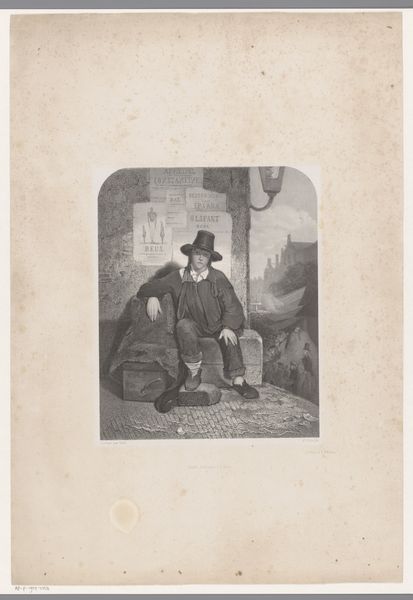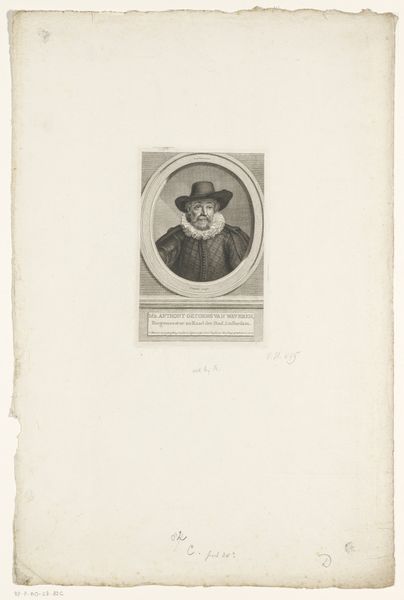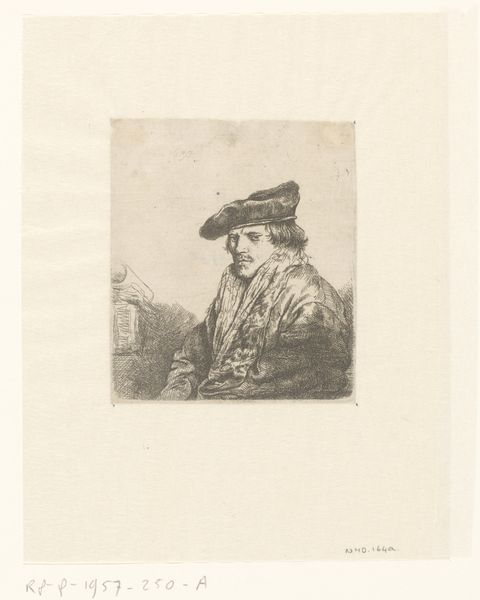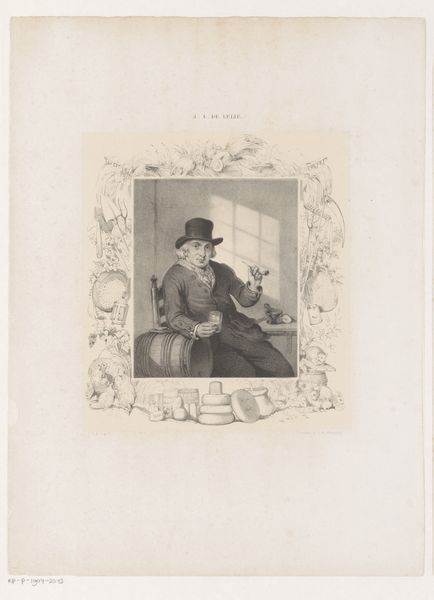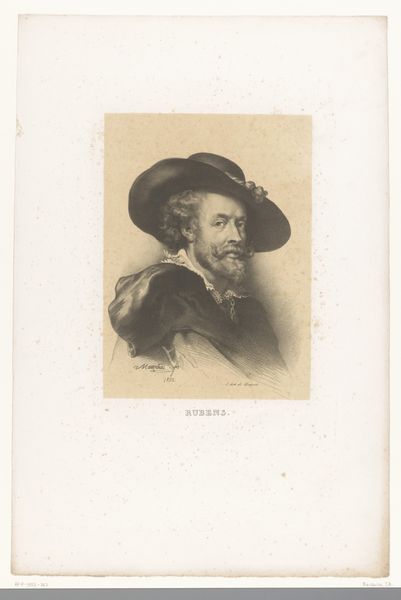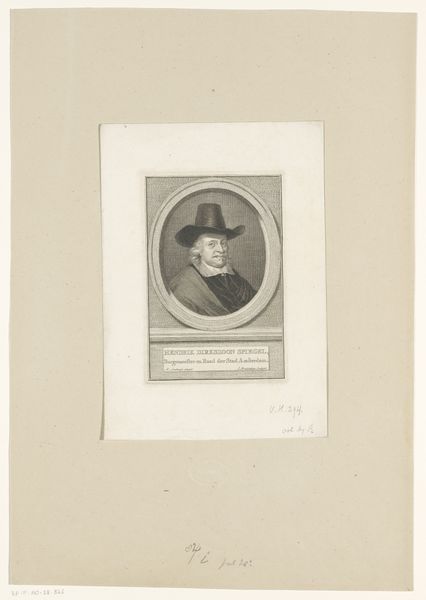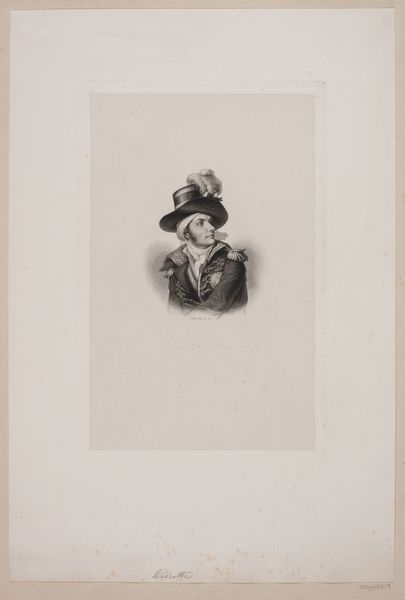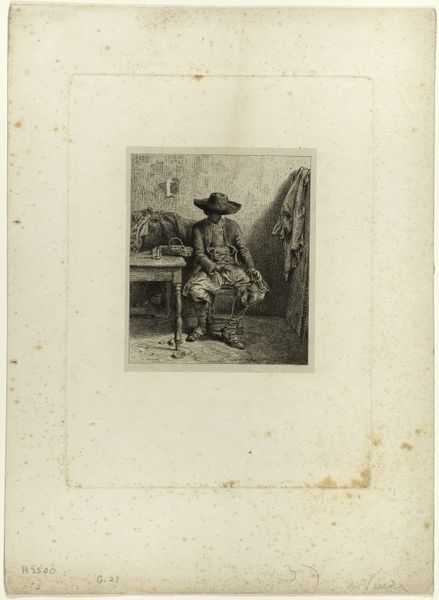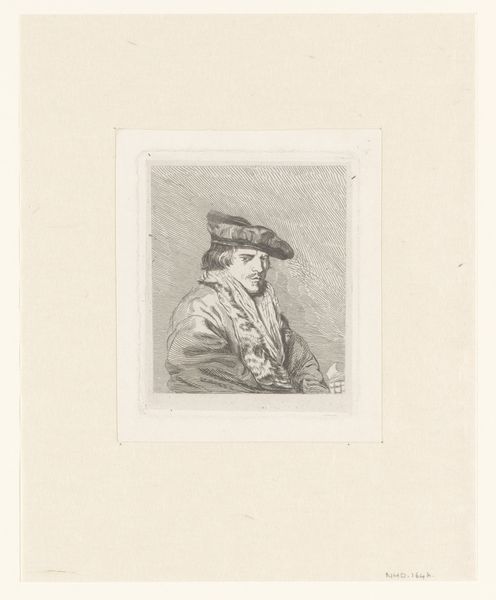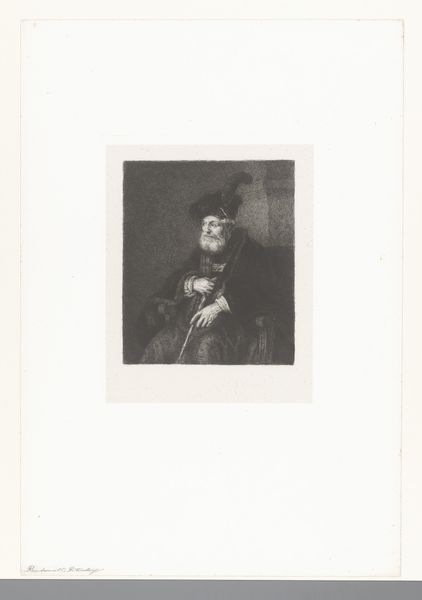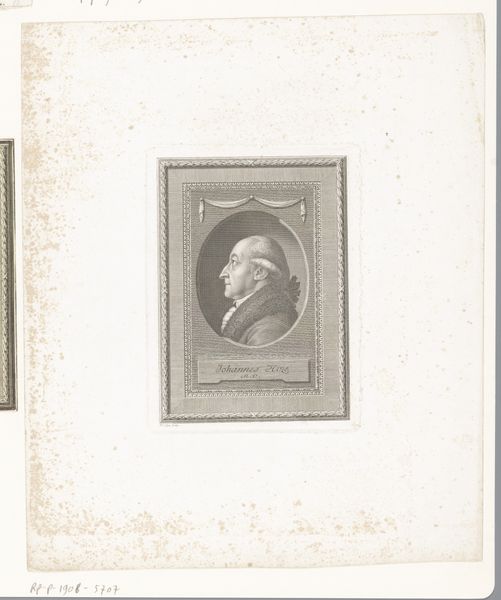
Fotoreproductie van een ets van een portret van de schilder Jan Asselijn door Rembrandt van Rijn before 1853
0:00
0:00
bissonfreres
Rijksmuseum
print, etching, paper, photography
#
portrait
#
aged paper
#
toned paper
# print
#
etching
#
paper
#
photography
Dimensions: height 218 mm, width 173 mm
Copyright: Rijks Museum: Open Domain
Curator: What strikes me immediately is the monochromatic tonality and delicate textures in this print. Editor: We're looking at a photographic reproduction, predating 1853, created by Bisson Frères, of a Rembrandt van Rijn etching. The original etching is a portrait of the painter Jan Asselijn. It’s currently held in the collection of the Rijksmuseum. The photographic reproduction is itself a print, realized on paper, capturing all the detail of the etched original. Curator: And the effect is quite arresting. Notice how the light and shadow define Asselijn's face and clothing, creating depth and character. The cross-hatching, so characteristic of etching, gives the whole image a palpable texture. Editor: Yes, and thinking about the labor involved… Consider not only Rembrandt’s work in the 17th century, but also the Bisson Frères. Photography in that period was an intricate chemical process, a complex system of production reliant on a network of suppliers and specialized knowledge. Creating the photograph meant engaging with industrial processes, chemicals, paper production and the established art market. This photographic reproduction democratized the art by making it accessible to more people than could afford to possess the original. Curator: The composition is so compelling as well! The artist’s confident gaze directs ours, while the play of light invites us to look closer, trace the marks made in the metal with our own eyes. Editor: It’s interesting to me how photography was deployed as a reproductive tool at this time, mimicking etchings and other graphic artforms. Rather than creating new art, these early photographers were interested in making art reproducible, shifting its relationship with audiences. Curator: Indeed. By reproducing it as a photograph on toned paper, it becomes more approachable and the stark black-and-white contrast gives the piece a strong graphic identity, setting it apart as a period-defining work of graphic art. Editor: Looking at this photographic print has made me reconsider the many ways that technology mediates art viewing and accessibility. Curator: I am leaving with renewed appreciation for the power of simple tonal variation and the careful deployment of light and shadow to shape form and create visual texture.
Comments
No comments
Be the first to comment and join the conversation on the ultimate creative platform.
